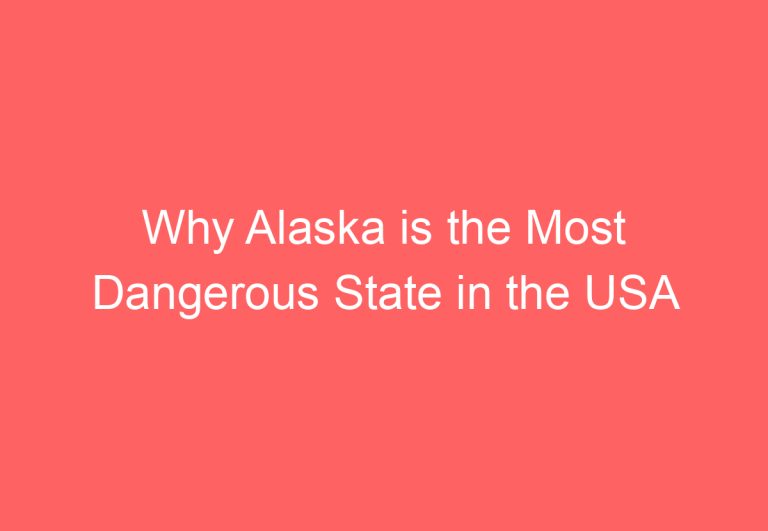Is Alaska Dark for 6 Months? Exploring the Truth about Alaska’s Polar Nights
Alaska is known for its stunning natural beauty, rugged terrain, and harsh winter weather. Many people assume that Alaska is dark for six months out of the year, but is this really true? The answer is no, Alaska is not dark for six months straight.

While it is true that some parts of Alaska experience periods of extended darkness, particularly during the winter months, the state as a whole does not experience six months of uninterrupted darkness. In fact, the amount of daylight and darkness in Alaska varies greatly depending on the location within the state.
There are many myths surrounding Alaska’s daylight and darkness, and it’s important to separate fact from fiction. In this article, we will explore the truth about Alaska’s daylight and darkness, including which parts of the state experience extended periods of darkness, and how Alaskans cope with the long winter nights.
Understanding Alaska’s Daylight Variations

Alaska’s unique location and geography result in a remarkable variation in daylight throughout the year. This section will explore the different factors that influence Alaska’s daylight patterns and how they impact daily life and activities.
Polar Phenomena Explained
Alaska lies within the Arctic Circle, a region that experiences polar phenomena such as the Midnight Sun and the Polar Night. During the summer months, the sun barely sets in Alaska’s northernmost city of Utqiagvik, resulting in 24-hour daylight for 82 days straight. Conversely, during the winter months, the sun barely rises, leading to a period of 24-hour darkness. However, it’s important to note that this phenomenon only occurs in the far north of Alaska and not throughout the entire state.
Daylight Patterns Throughout the Year
Alaska’s daylight patterns change throughout the year due to its latitude and the Earth’s tilt. During the summer solstice, which occurs around June 21st, Alaska experiences its longest day of the year, with up to 22 hours of daylight in some regions. Conversely, during the winter solstice, which occurs around December 21st, Alaska experiences its shortest day of the year, with as little as 4 hours of daylight in some regions.
Regional Daylight Differences
Alaska’s daylight patterns vary depending on the region. For example, the southern coastal region experiences milder daylight variations compared to the northern and interior regions. Anchorage, the state’s largest city, experiences around 18 hours of daylight during the summer solstice and around 5 hours of daylight during the winter solstice.
Impact on Daily Life and Activities
Alaska’s daylight variations can impact daily life and activities, particularly during the winter months. The lack of daylight can lead to Seasonal Affective Disorder (SAD), a type of depression that occurs during the winter months when there is less sunlight. However, Alaska’s unique landscape and wildlife offer a variety of outdoor activities, such as skiing, snowboarding, and dog sledding, that allow residents and visitors to enjoy the winter months.
Myths Versus Reality
Contrary to popular belief, Alaska does not experience six months of daylight and six months of darkness. Only the most extreme poles of the earth have a full six months of darkness and six months of light, and no part of Alaska is north enough to experience this phenomenon.
Unique Experiences in Alaska
Alaska’s unique daylight patterns offer a variety of experiences for visitors. During the summer months, visitors can witness the Midnight Sun, a natural phenomenon where the sun remains visible at midnight. Additionally, Alaska’s northern lights, or Aurora Borealis, are a stunning display of colored lights that illuminate the night sky during the winter months. Visitors can also explore Alaska’s stunning landscape, including Mendenhall Glacier, Ketchikan, Seward, and the Inside Passage.
In conclusion, Alaska’s daylight variations result from a combination of factors, including its location within the Arctic Circle, the Earth’s tilt, and its unique geography. These patterns have a significant impact on daily life and activities, but also offer visitors a variety of unique experiences that cannot be found anywhere else in the world.
Frequently Asked Questions

What are the typical daylight hours during the winter months in Alaska?
During the winter months in Alaska, the amount of daylight varies depending on the location. In Anchorage, the largest city in Alaska, the sun rises around 10:00 am and sets around 4:00 pm in December. In Fairbanks, located further north, the sun rises around 11:00 am and sets around 3:00 pm. In Barrow, the northernmost city in Alaska, the sun does not rise at all for several weeks in December.
During which months does Alaska experience extended darkness?
Alaska experiences extended darkness during the winter months, typically from late November to late January. During this period, the amount of daylight decreases significantly, with some areas experiencing only a few hours of daylight per day.
How does the duration of daylight change throughout the year in Alaska?
The duration of daylight in Alaska changes throughout the year, with the longest days occurring during the summer solstice in June and the shortest days occurring during the winter solstice in December. In Anchorage, for example, the length of daylight ranges from around 5 hours in December to around 19 hours in June.
What is the longest period of darkness experienced in Anchorage, Alaska?
In Anchorage, the longest period of darkness occurs around the winter solstice in December, with only around 5 hours of daylight per day. However, the amount of daylight gradually increases after the solstice, with the sun rising earlier and setting later each day.
Is it true that certain areas in Alaska have continuous daylight in the summer?
Yes, certain areas in Alaska, such as Barrow, experience continuous daylight during the summer months. This phenomenon is known as the “Midnight Sun” and occurs because of Alaska’s location in the far north.
What is the shortest day of the year in terms of daylight in Alaska?
The shortest day of the year in terms of daylight in Alaska occurs around the winter solstice in December. In Anchorage, for example, this day typically has only around 5 hours of daylight. However, the amount of daylight gradually increases after this day, with the sun rising earlier and setting later each day.






